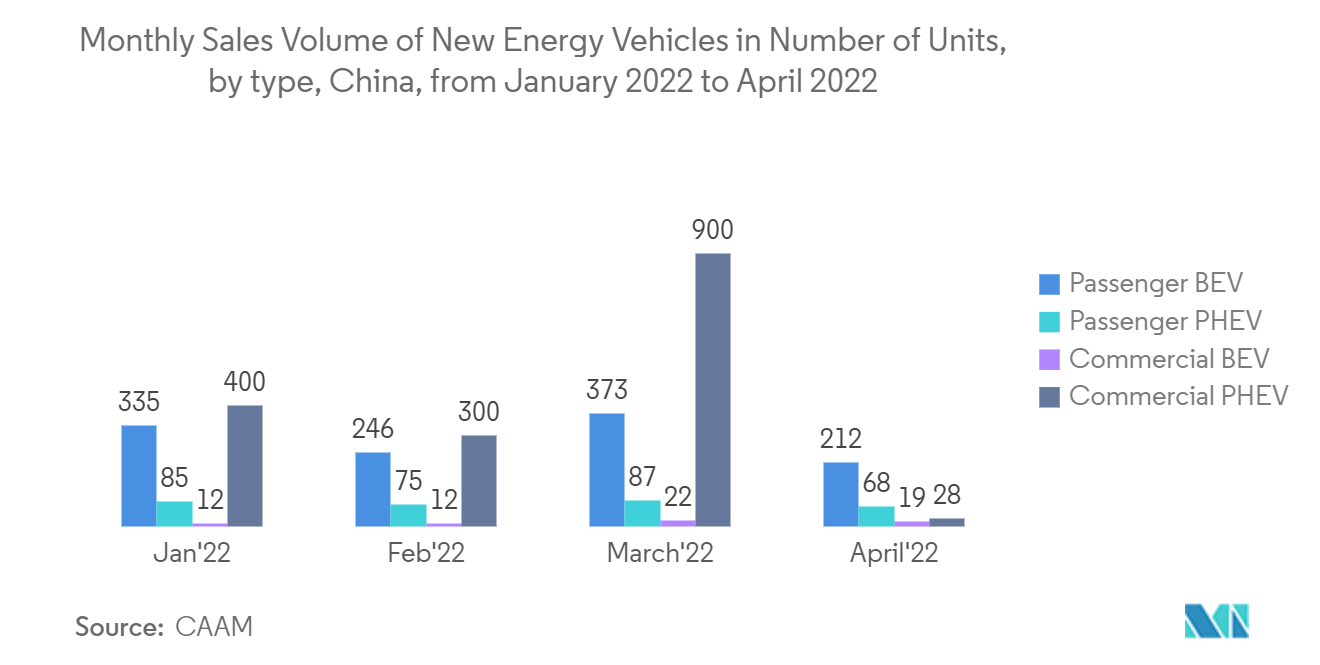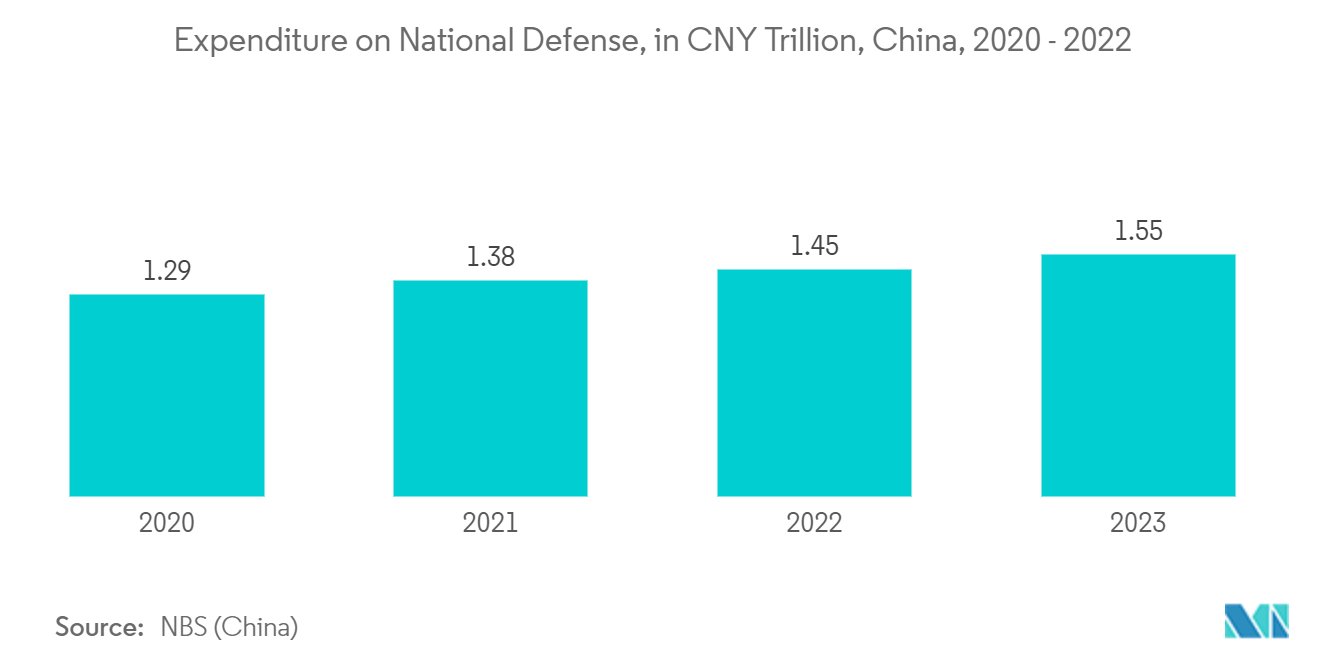Market Trends of China Sensors Industry
Automotive Industry is Expected to Hold a Significant Share
- Customers' expectations for quality, functionality, and efficiency have grown due to the Chinese automobile industry's fast rise. Notably, the Chinese government views its automotive industry, including the auto parts sector, as one of the prominent industries. The Chinese government expects China's automobile output to reach 35 million units by 2025, which is expected to make the automotive sector one of the prominent users of MEMS sensors in China.
- China's government has invested significantly in EV R&D, achieving the top score on Roland Berger's E-mobility Index for 2021. Notably, China has the world's largest EV industry by a wide margin. It is the world's top EV producer and produced 3.5 million EVs in 2021, 1.6 times more than the previous year. China recently instructed automakers to sell 40% more electric vehicles (EVs) than conventional vehicles by 2030.
- According to CAAM, sales of new energy vehicles in China reached 299,000 units in April 2022, of which 280,000 were passenger electric cars and 19,000 were commercial electric cars. 212,000 and 68,000 passenger battery electric cars (BEVs) and plug-in hybrid electric vehicles (PHEVs) were sold, respectively. The growth in the adoption of electric vehicles is expected to propel the market's growth over the forecast period.

Defense Industry is Expected to Hold a Significant Share
- Modern military and defense environments need tested, dependable, and scalable technologies. Since they offer solutions for the entire defense ecosystem, including complicated controls, measurements, monitoring, and execution, sensors are crucial to the technologies. For instance, temperature sensors are common in defense in many mission-critical systems, such as liquid cooling and motion control.
- Wireless sensors are becoming increasingly important in the military and aerospace fields. Wireless sensors are a crucial semiconductor technology product. When developing military vehicles, their influence on the aircraft's structural integrity, diagnostic optimization, and ongoing health checks continues to be essential.
- These sensors aid in delivering accurate information on different aspects to increase the vehicle's efficacy and efficiency. 'Smart Skin Technology' has also recently been used in the aerospace sector. This ground-breaking technology equips the aircraft's exterior with over 10,000 microsensors, allowing the pilot to monitor the vehicle's condition. It assists in measuring wind speed, temperature, and physical strain movement, enhancing the aircraft's lifespan significantly.
- China is focusing on strengthening itself in the defense industry with the help of AI. Using AI, it will produce several unmanned aerial vehicles (UAVs), where sensors will be utilized heavily. Pilot deaths brought on by strikes from anti-craft weapons can be significantly decreased if UAVs carry sensors and radar front deployment and act as the "pathfinder" for manned aircraft.
- According to the National Bureau of Statistics of China, the country spent over CNY 1.38 trillion (~USD 216.5 billion) on national defense in 2021, a constant increase over the previous 10 years. In the same year, nearly 5% of all national government spending went toward national defense.
- According to the draught budget plans, the Chinese government proposed the defense budget for the fiscal year 2022 at CNY 1.45 trillion (USD 230 billion), an increase of 7.1% annually. This increase may help in China's fast modernization of the navy, which includes the construction of new aircraft, air force, and missile systems where optical and radar sensors will be utilized. These trends may drive the market for sensors during the forecast period.


